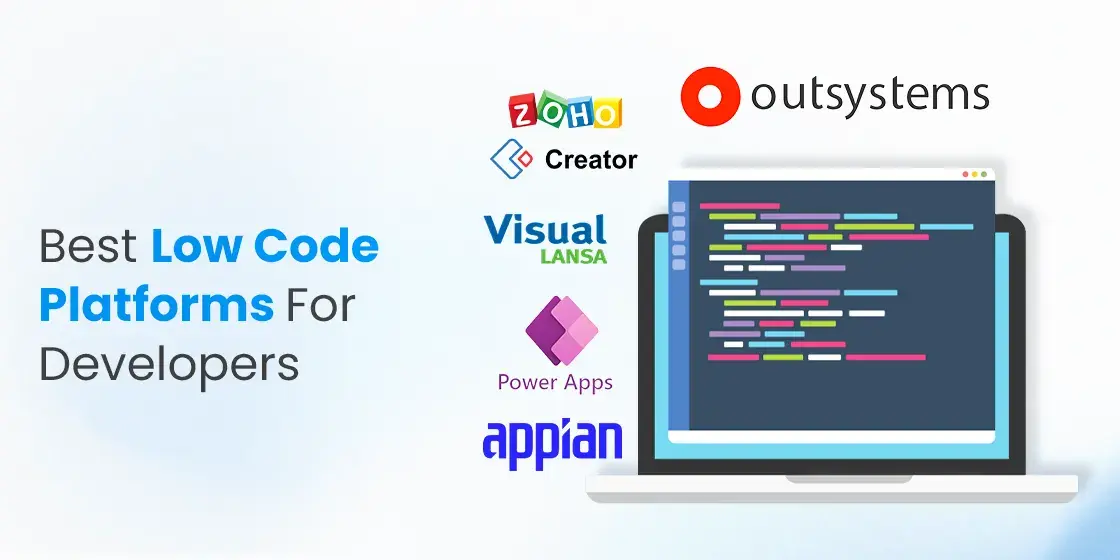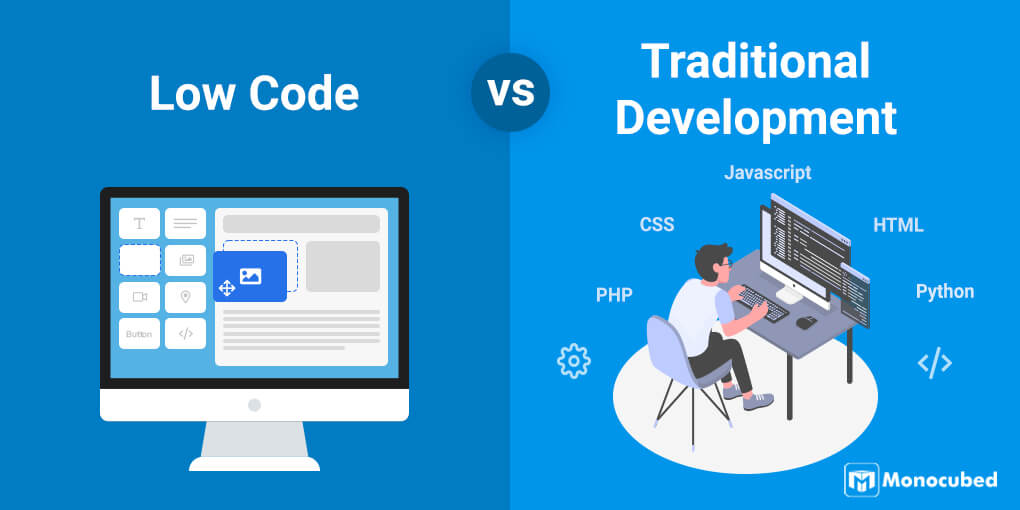Due to several factors due to a variety of factors, low-code development is easier for non-developers. These are often called "citizens developers."
Drag-and Drop Builders: Low code platforms have drag-and drop interfaces, which allow non-developers create applications without having to write a single line of code. This lets development be more accessible to those with no technical backgrounds.
WYSIWYG Editors editors "What You Seen Is What You Receive" editors help users create workflows and interfaces that appear similar to the final product which makes them simpler to comprehend.
Simplified workflow and logic
Visual Workflow Design: Users can easily design business process and application logic by using flowcharts, models and diagrams. They are much easier to implement than traditional programming.
Pre-built Components of Logic Low-code platform often includes pre-built logic (e.g. loops, conditional statement) that can easily be set up, eliminating the requirement for complicated programming.
Reusable Components & Templates
Library of pre-built templates Numerous low-code platforms have templates for common applications that allow non-programmers to begin from a solid base and alter as required.
Reusable Modules and Widgets Utilizing reusable modules and widgets, users can streamline the creation process, while also reducing the requirement for technical knowledge.
Guided Development and Tutorials
Step-by-Step instructions: Platforms offer tutorials and on-screen help to non-developers working on applications.
Interactive Tutorials Interactive tutorials are interactive and hands-on and help users learn through doing. This boosts their confidence in the platform.
Integration with Existing tools
Seamless Integration - Low-code platforms can easily be integrated with existing systems and business tools (e.g. ERP, CRM) which gives even non-developers to build apps that are compatible to their workflows.
APIs and Connectors APIs built-in and connectors ease the integration process and allow non-developers to connect their apps to external services without the need for complex coding.
Collaboration Features:
Team Collaboration: Features like real-time collaboration, as well as shared workspaces enable non-developers to work alongside professionals, business analysts and other stakeholder groups effectively.
Role-Based Access Control: Non-developers can be assigned specific roles that have appropriate access levels, which ensures they are able to contribute to the development process without compromising security and functionality.
Automated testing and debugging:
Built-In Testing Tools: Platforms that are low-code usually include built-in testing and debugging tools to automate these procedures, making it much easier for non-developers to make sure the application is working properly.
Platform detects problems when they occur and offers fixes. This aids non-developers with troubleshooting.
The general rule is that low-code development can open up development to a wider audience. This is a major benefit for developers who are not. By offering intuitive, visually-guided tools and experiences, low-code platforms enable business owners to actively contribute and manage applications. View the most popular Low-code Platform for application development for more recommendations including application development platforms, jdbc server, app dev platform, rad development, rapid app development, ms azure sql, app development platform, application modernization, microsoft azure sql, app modernisation and more.

Benefits Low-Code Applications In Governance And Safety
Low-code development can bring many advantages regarding security and governance. They are essential to ensure that apps are secure, reliable and well-managed throughout their entire lifecycle. Here are a few key advantages.
Unified Management Console: This low-code platform typically provides a central dashboard where administrators can control and monitor all applications and ensure that the governance is consistent across the organization.
Role-Based Access Control: These platforms have robust control based on roles that allows administrators to define rules and then enforce these policies. This ensures that only authorized users can access or modify certain parts of an app.
Compliance and Regulatory Adherence
Built-in Compliance Features: A lot of low-code platforms are built to comply with the industry norms and regulations (e.g., GDPR, HIPAA). They provide tools and frameworks to ensure that the applications meet these requirements.
Audit Trails and Logging: Complete logging, audit trails and logs are usually integrated into companies which allows them to monitor changes and track access. They also can verify compliance with external and internal laws.
New Security Measures to Improve Security
Data Encryption Low-code systems typically have built-in encryption for information in transit and in rest, securing sensitive data.
Security Certifications: A lot of providers of low-code software have security certifications, such as ISO 27001 or SOC 2 to prove that they adhere to high standards. These certifications provide further assurance to users.
Automated security updates
Regular updates and patches Low code platforms usually are capable of handling security patches and updates regularly. This helps ensure that applications remain safe from the latest security threats, and without developers having to manually intervene.
Security Monitoring Tools: These instruments give alerts in real time and insight into potential security problems.
Data Governance
Data Access Policies These platforms allow organisations to create data access rules and enforce the policies, making sure that the data is only accessible to those who have been granted access. They also ensure that the data is used correctly.
Data Masking and Anonymization Built in tools to mask and anonymize data ensure the security of sensitive information, especially in development environments and testing environments.
Continuous application lifecycle management
Pipelines for deployment and development Low code platforms have integrated development and deployment pipelines which include security checks. They ensure security is maintained throughout the entire lifecycle of the application.
Version Control. Integrated version management helps to track and reverse any changes made to the application, ensuring that the integrity of it is maintained.
User Authentication and Authorization:
Single Sign-On Support for single sign-on (SSO), and other advanced methods of authentication simplify management and enhances security.
Multi-Factor Authentication Most platforms have built-in support of multi-factor authentication. This provides an additional layer of security to the applications.
Policy Enforcement and Compliance Monitoring:
Policy Templates: Low-code platforms often come with pre-defined policy templates that help organizations swiftly implement security and governance policies.
Compliance Monitoring Tools: They give continuous monitoring and a report on the status of compliance. This helps to identify potential issues and address them proactively.
Integration into Existing Security Infrastructure
Seamless Integrate: Low-code platform are designed to integrate seamlessly with existing security infrastructure and tools, including identity management tools, SIEMs (Security Information and Event Management Solutions), and firewalls.
API Security API Security: Built-in API security features ensure that integrations with external systems are safe, safeguarding the integrity of data as well as ensuring that applications remain secure.
Training and the best practices
Guided best practices: Many platforms provide guidelines and recommended methods for developing secure applications. They assist non-developers in meeting security requirements.
Certain low-code companies offer security training that helps users develop and maintain secure applications.
The security and governance features of low-code applications make sure that they are developed and maintained in a compliant and controlled way. These platforms offer the tools and frameworks needed to safeguard sensitive data, enforce policies and maintain regulatory compliance while simplifying management and oversight. Follow the most popular Legacy application modernization with Low-code for more recommendations including developing mobile apps, application modernization software, build with docker, build a docker container, develop web application, lowcode no code, azure sql databases, push alerts, mobile app development platforms, azure sql databases and more.

Advantages Of Low-Code Application Development In Terms Of Vendor Support And Community
Low-code application development platforms offer major advantages in terms the support provided by vendors and communities. These are crucial for ensuring successful implementation, ongoing maintenance, and continual enhancement of applications. Here are a few principal benefits: Support from the vendor
Comprehensive Technical Support:
Support Teams Dedicated to You: A lot of low-code platforms provide access to dedicated support teams that can help with technical issues, troubleshooting and provide guidance to ensure that any problems are resolved quickly.
24/7 Support Certain vendors are accessible 24/7, which is beneficial to businesses operating in multiple time zones.
Training and Onboarding:
Training programs that are structured: Vendors provide structured courses such as webinars and certification courses. This helps users to quickly master the platform.
Personalized Onboarding: Many vendors offer customized onboarding services that help new customers use the platform in a way that is effective and customize it to their particular requirements.
Regular updates and enhancements
Continuous improvement: Low-code platform providers typically release regular updates which contain new features, performance enhancements and security patches making sure that their platform is up-to-date and secure.
Feedback integration: Vendors will frequently incorporate feedback from users during their process of development to ensure that their platform meets the evolving requirements of users.
Comprehensive Documentation:
Documentation in Detail: Users can find answers to their questions by referring to an organized and detailed guide that covers every aspect of the program starting from its basics to more advanced modifications.
API References: Comprehensive API documentation assists developers in integrating the low-code platform with other systems and to customize their applications to be effective.
Professional Consulting Services
Expert Consultation : Vendors provide consulting services, such as architecture design and complex implementations. They do this in order to make sure that their users can fully benefit from the platform.
Custom Development: Some vendors offer services that allow the development of specific features or systems that aren't offered from the beginning.
Community Support for the Community
Active User Communities
Forums and Discussion Boards: Numerous low-code platforms have lively online communities that allow users to discuss issues, ask questions, and share solutions, and collaborate on best practices.
User Groups & Meetups User Groups and Meetups: Local or virtual groups and meetings provide opportunities to learn, network and sharing knowledge.
Knowledge sharing and collaboration:
Community-Contributed Resources: Users often share templates, modules, and extensions that they have developed, which can be reused or adapted by others, accelerating development and innovation.
Crowdsourced Problem Solving: The collective wisdom and experience of the crowd can be a great resource for troubleshooting issues and figuring out creative solutions for complex issues.
Learning and Development
Community-led training: Many community groups offer training sessions, webinars and workshops led by experts who have experience in the field.
Online Tutorials & Courses: Users of the community often make online tutorials, classes and tutorials on how to accomplish things, which enhances learning resources.
Feedback and Influence
Product Feedback Channels Community forums contain a number of channels for giving feedback to vendors, which can influence the design of new features.
Beta Testing Programs: Members of the community who are active may have the opportunity to be part of beta testing programs, giving the opportunity to test new features and an opportunity to participate in shaping the platform's evolution.
Recognition and Support:
Community Recognition Programs: Many companies offer recognition programs to recognize the contributions made by active members of their community such as MVP (Most Valuable Professionals) programs.
Peer Support Peer Support: Community members frequently offer support to peers by sharing their knowledge and providing guidance to users who are less knowledgeable. This creates a supportive and supportive atmosphere.
Overall, a solid vendor's support as well as a vibrant, active community provide a comprehensive assistance system for low-code application development. It ensures users have the expertise, resources and collaborative opportunities that they require to successfully develop and deploy their applications.
